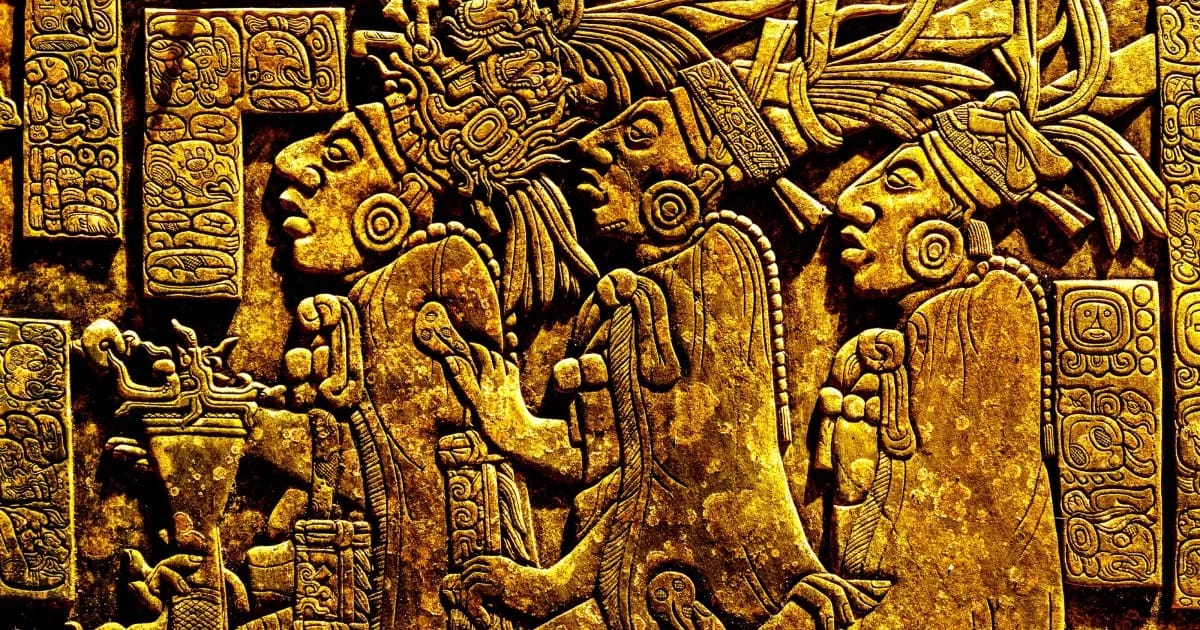
What are the Mayan Codices? The Mayan Codices are ancient books written by the Maya civilization, containing a wealth of knowledge about their culture, astronomy, rituals, and history. These manuscripts were made from bark paper, folded like an accordion, and covered with intricate hieroglyphs and illustrations. Only four codices have survived the test of time: the Dresden, Madrid, Paris, and Grolier Codices. Each one offers a unique glimpse into the sophisticated world of the Maya. Why are they important? They provide invaluable insights into the Maya's advanced understanding of mathematics, astronomy, and their complex calendar system. Despite their age, these codices continue to captivate scholars and history enthusiasts alike.
Key Takeaways:
- The Mayan Codices are ancient books made from bark paper, containing valuable information about the Maya civilization's culture, astronomy, and rituals. Only four codices have survived, revealing their advanced knowledge and way of life.
- Skilled scribes meticulously created the Mayan Codices using natural pigments and animal hair brushes. These ancient manuscripts offer insights into the Maya's advanced understanding of astronomy, mathematics, and spiritual practices.
What Are The Mayan Codices?
The Mayan Codices are ancient books written by the Maya civilization. These texts hold a wealth of information about their culture, religion, and daily life. Let's dive into some fascinating facts about these ancient manuscripts.
- The Mayan Codices are made from bark paper, specifically from the wild fig tree.
- Only four Mayan Codices have survived to the present day.
- These codices are named after the cities where they were found: Dresden, Madrid, Paris, and Grolier.
- The Dresden Codex is considered the most complete and well-preserved of the four.
- The codices are written in hieroglyphic script, which combines logograms and syllabic symbols.
- The Mayan Codices primarily contain information on astronomy, rituals, and calendars.
- The Dresden Codex includes detailed astronomical tables, such as lunar and solar eclipses.
- The Madrid Codex is the longest of the four, with 112 pages.
- The Paris Codex is known for its zodiac-like representations of constellations.
- The Grolier Codex is the most controversial, with debates about its authenticity.
How Were The Mayan Codices Created?
Creating a Mayan Codex was a meticulous process. Skilled scribes, known as "aj tz'ib," played a crucial role in their production.
- Scribes used natural pigments made from minerals and plants to create vibrant colors.
- The bark paper was coated with a thin layer of lime to create a smooth writing surface.
- Scribes used brushes made from animal hair to write and draw on the codices.
- The codices were folded accordion-style, making them compact and portable.
- Each codex could take months or even years to complete due to the detailed artwork and writing.
The Significance of The Mayan Codices
The Mayan Codices are invaluable for understanding the Maya civilization. They offer insights into their beliefs, knowledge, and way of life.
- The codices reveal the Maya's advanced understanding of astronomy and mathematics.
- They provide evidence of the Maya's complex calendar system, including the Tzolk'in and Haab' calendars.
- The codices depict various deities and mythological scenes, highlighting the importance of religion in Maya society.
- They also include instructions for rituals and ceremonies, demonstrating the Maya's spiritual practices.
- The codices show the Maya's agricultural knowledge, including planting cycles and crop management.
The Discovery and Preservation of The Mayan Codices
The journey of the Mayan Codices from ancient times to the present day is a story of discovery and preservation.
- The Dresden Codex was discovered in a library in Dresden, Germany, in the 18th century.
- The Madrid Codex was found in Spain and is believed to have been brought there by Spanish conquistadors.
- The Paris Codex was discovered in the Bibliothèque Nationale de France in the 19th century.
- The Grolier Codex was found in a private collection in Mexico in the 20th century.
- Efforts to preserve the codices include digitalization and careful conservation to prevent further deterioration.
The Enduring Legacy of Mayan Codices
Mayan codices offer a fascinating glimpse into an ancient civilization's knowledge, beliefs, and daily life. These manuscripts, crafted from bark paper, contain intricate illustrations and hieroglyphs that reveal the Mayans' advanced understanding of astronomy, mathematics, and mythology. Despite the tragic loss of many codices due to Spanish conquest, the surviving ones remain invaluable to historians and archaeologists.
Studying these codices helps us appreciate the Mayans' intellectual achievements and cultural richness. They remind us of the importance of preserving historical artifacts for future generations. As we continue to decode and interpret these ancient texts, we gain deeper insights into a civilization that significantly shaped human history.
In essence, Mayan codices are more than just old books; they're a testament to human ingenuity and the enduring power of knowledge. Their legacy continues to inspire and educate, bridging the past with the present.
Frequently Asked Questions
Was this page helpful?
Our commitment to delivering trustworthy and engaging content is at the heart of what we do. Each fact on our site is contributed by real users like you, bringing a wealth of diverse insights and information. To ensure the highest standards of accuracy and reliability, our dedicated editors meticulously review each submission. This process guarantees that the facts we share are not only fascinating but also credible. Trust in our commitment to quality and authenticity as you explore and learn with us.


